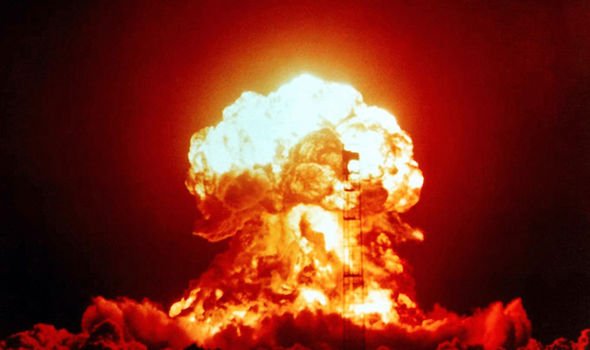
In July, the isolated nation test-launched intercontinental ballistic missiles, or ICBMs, that can reportedly deliver nuclear warheads to targets thousands of miles away. And as journalists revealed in August, US intelligence officials think North Korea has also figured out how to miniaturize its warheads to fit atop ICBMs.
While many weapons experts question the exact capabilities of North Korea's latest hardware, few deny it represents worrisome progress toward the nation becoming a credible nuclear threat. Experts are also concerned the maturing ICBM program could proliferate nuclear weapons around the world, raise the likelihood of nuclear accidents, and bring the world closer to the brink of what could be a global calamity.
"Based on current information, [the July 28] missile test by North Korea could easily reach the US West Coast, and a number of major US cities," David Wright, a physicist and the co-director of the Union of Concerned Scientists' global security program, wrote in a recent blog post.
To estimate how long it'd take for North Korean missiles to reach key US targets, Business Insider called up Wright for help.
The approximate flight times from the North Pyongan province (where the ICBMs were test-launched) to several key US targets are:
New York City: 40 minutes 30 seconds
Washington DC: 41 minutes
Chicago: 39 minutes 30 seconds
Anchorage: 29 minutes
Los Angeles: 38 minutes
Honolulu: 37 minutes
Guam: 18 minutes 30 seconds

Wright said the above flight times and distances are not ironclad and come with numerous caveats.
For one, they're calculated based on what is publicly known about North Korea's Hwasong-14 ICBM system and its July 28 test launch. Wright estimated the missile to have a maximum range of about 6,500 miles, which would bring it just shy of Washington, DC.
"The range of a ballistic missile is tied to its speed. It's just like throwing a ball; the faster you throw it at a given angle, the farther it will travel," Wright said, adding that the burn-out velocity -- or speed an ICBM reaches when it shuts off its engines in space -- isn't known, among other variables.
Given the correct angle of launch and some modifications, he thinks North Korean ICBMs might be capable of reaching between 3 and 4.2 miles per second at burn-out.
"I've tried to put in numbers that I think are related to North Korean missiles," said Wright, who is considered an arms control, missile technology, and space weapons expert. "I get those from years of playing around with this stuff."
Another unknown is payload weight.
The Hwasong-14 missile test reportedly flew some 2,300 miles into the sky, for a total flight time of about 47 minutes. It also lofted a reentry vehicle -- a device that protects one or more warheads from burning up when plowing through Earth's atmosphere -- but it's uncertain if the dummy vehicle accounted for the weight of an actual warhead. (The lighter a payload, the faster, higher, and farther a missile can go.) There's also evidence that the reentry vehicle failed and broke into pieces on its way back down.

Just as important, Wright said his numbers and flight paths don't account for Earth's movement.
"When you launch, the Earth doesn't stay still. It rotates underneath the missile," Wright said. "Trying to do this on a rotating Earth gets really complicated."
This not only requires over- or under-shooting a missile, but also makes the physics of targeting far more complex.
"The range of a ballistic missile is tied to its speed, and if you're firing east, you get a little bit of a speed boost from the Earth's rotation," Wright said. He added that it depends on whether you're firing at a target to your north or south, since Earth moves faster at its equator than northern or southern latitudes.
Finally, the numbers also assume a North Korean ICBM could thwart missile defense systems, such as the US military's latest "kill vehicle" technology, and actually reach its intended target.
"If you're launching your missile, you need to figure out how fast it's going, shut off engines at the right speed, and keep it pointed in the right direction," Wright said. "That's hard to do really accurately."
Hi! I am a robot. I just upvoted you! I found similar content that readers might be interested in:
http://www.independent.co.uk/news/world/how-long-could-take-north-korean-nuclear-missiles-reach-us-cities-america-kim-jong-un-a7920076.html
Downvoting a post can decrease pending rewards and make it less visible. Common reasons:
Submit